Shrubby veronicas, also called Hebe, are charming bushes, much appreciated for their evergreen foliage and decorative appearance, as well as for their flowering. Easy to grow in pots or in open ground, they thrive equally on the coast or in urban environments, in a border, a hedge or in a rockery, which is a very good reason to propagate them! So, follow us in the garden to learn when and how to make a cutting of shrubby veronica, from large- or small-leaved varieties.

When to take cuttings of shrubby veronica?
To succeed with your propagation by cuttings of Hebe, the best time of year is summer, ideally August. Select young shoots of the year, whose wood is still supple (referred to as semi-woody stems). This still-warm and sufficiently sunny season favours root development of your future young plants. It is also the period with the highest success rate.
Note: propagation by cuttings can also be done in early autumn, but reserve this for regions with mild winters (Atlantic coast, Mediterranean fringe), and remain vigilant about frost risk. It is also possible to take cuttings in spring, but again take care with summer heat and expect them to take a little longer to root.
How to take cuttings from shrubby veronica?
1- Use a pot, ideally 15 to 20 cm in diameter, and pour a 2–3 cm layer of clay pebbles into the bottom. This will prevent watering water from stagnating around the roots.
2- Then fill with seed and potting compost (both rich and light) and firm it slightly with your hands. Leave 2 cm between the compost and the top of the pot.
3- Water this substrate using a watering can or a spray bottle. Preferably use rainwater, which is less calcareous than tap water. Compost should be moist, but not waterlogged.
4- Then use a pencil or a stick to make a hole 4–5 cm deep in the compost.
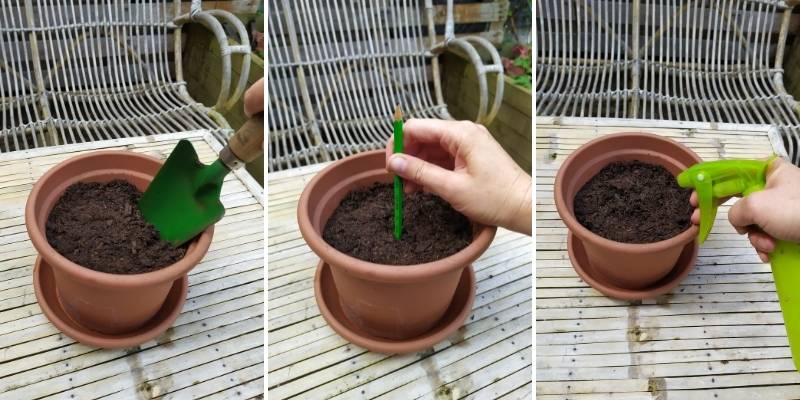
Note: to increase your chances of success, we recommend taking at least five cuttings and placing them together in the same pot a few centimetres apart.
5- Next observe your bush to select healthy stems, ideally without flowers. With your pruning shear, cut five current-year stems (semi-woody), each 10–15 cm long. Stem should include at least 4 or 5 nodes (area of stem where leaves start).
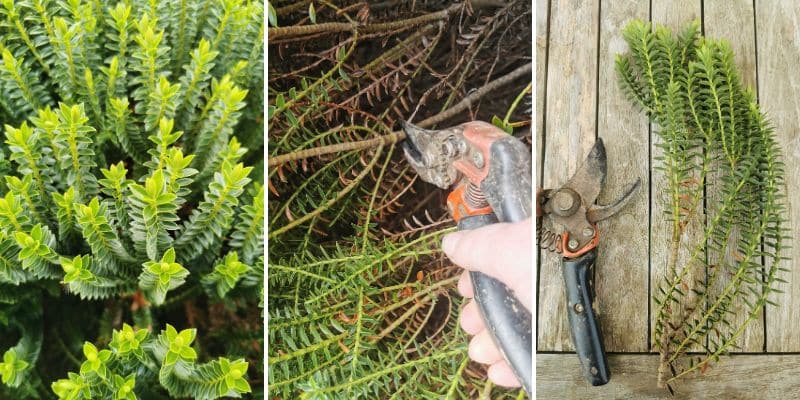
6- Trim your branch just below the lowest node, as roots will appear from that point.
7- Remove lower leaves from your cuttings with pruning shear or by hand, then trim the top of the stem to retain half the foliage. This prevents exhaustion of cuttings due to leaf transpiration.
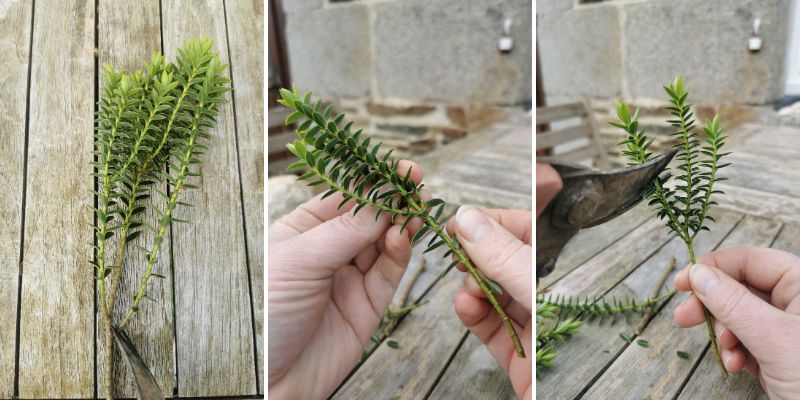
8- Plant your stem in the hole, ensuring at least three nodes are buried in the compost. Facultative: you can dip the base of the stem in a plant hormone for cuttings before planting to boost root development.
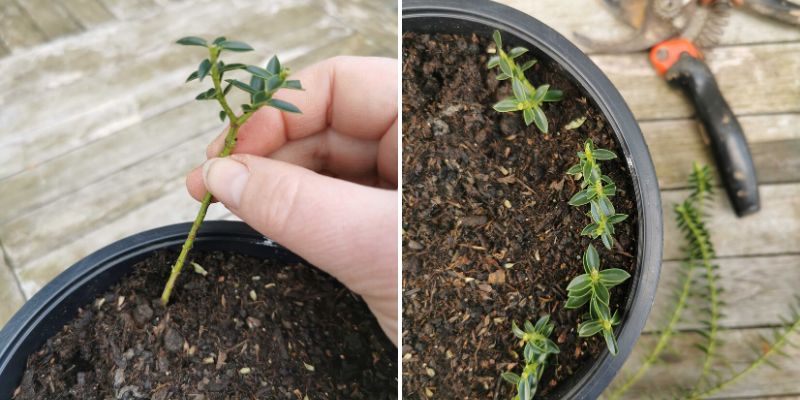
9- Firm the compost around the cutting to remove air pockets and help it stay upright.
10- Place a cloche over your cutting to saturate the air with humidity. This is the principle of "cuttings under cover". Stem and leaves must not touch the cloche to prevent mould forming!
Tip: you can replace the cloche with the top of a plastic bottle or with a clear bag held up by stakes.
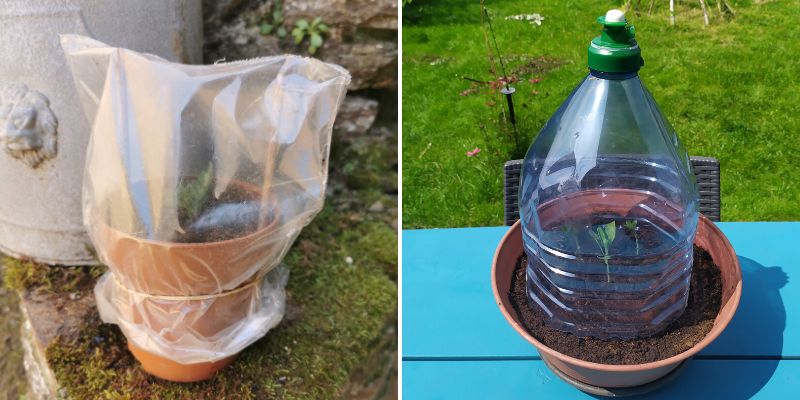
11- Over the next two months, water regularly the cutting so compost remains slightly moist, but without excess.
12- Place pots in light shade, in a bright spot but out of direct sun.
13- Refresh air by lifting the cloche for half an hour every 3–4 days.
14- Roots of your cuttings will be well developed after 2–3 months. You can then remove the cloche permanently. Also consider repotting your young plants into a larger pot if they are cramped.
15- Protect your young shoots during their first winter by keeping them in a greenhouse, conservatory or, if necessary, in a bright room indoors.
16- Your young bushes can be planted in open ground or in a large pot the following spring. Choose well-drained sites, in sun or partial shade depending on variety. During the first two summers, water young shrubby veronicas in case of prolonged drought.
Necessary equipment
- Pot (ideally 15–20 cm diameter) with drainage holes in base for water evacuation ;
- spray bottle or watering can ;
- pencil or stick ;
- clay pebbles ;
- clean pruning shears (to limit spread of disease) ;
- cloche, plastic bottle or plastic bag with stakes ;
- seed and potting compost ;
- Facultative : root activator.
Further reading
- Discover our range of Shrubby veronicas.
- To learn all about shrubby veronica: planting, pruning and care.
- Find out which Hebe to plant according to your region.
- Our criteria to know how to choose a Hebe.
- Discover how to pair Hebe.
- And when and how to prune a shrubby veronica.































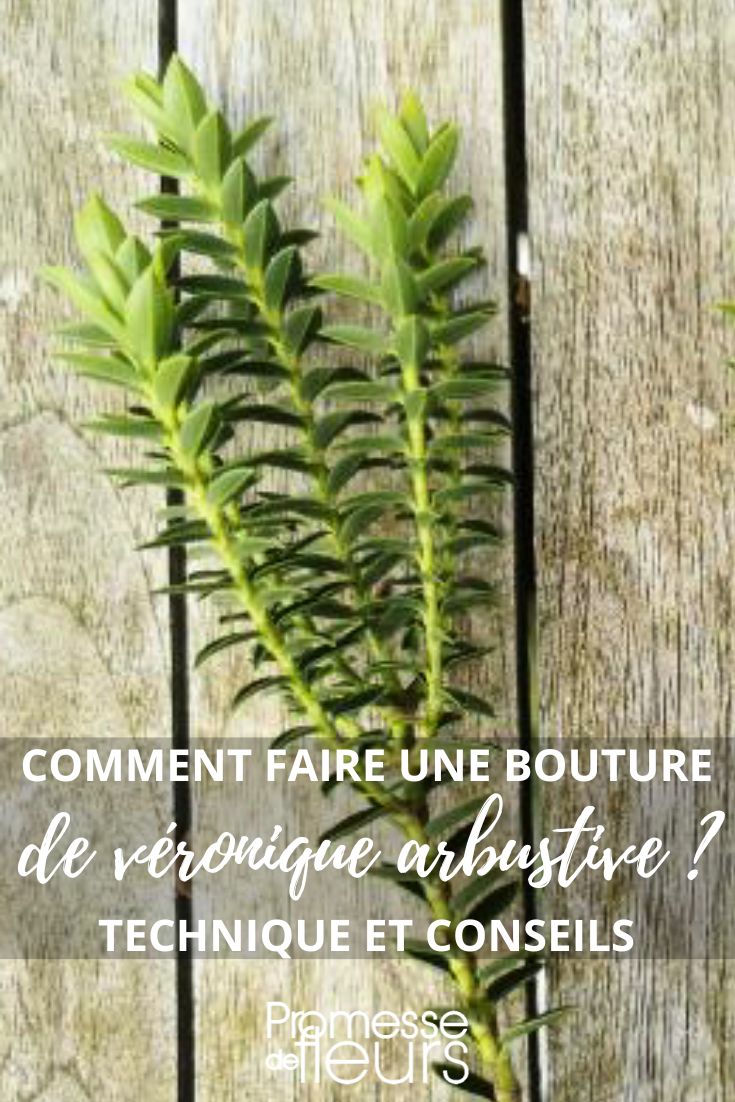
Comments